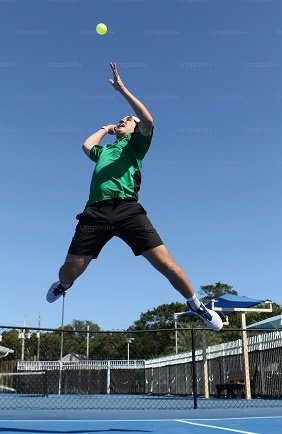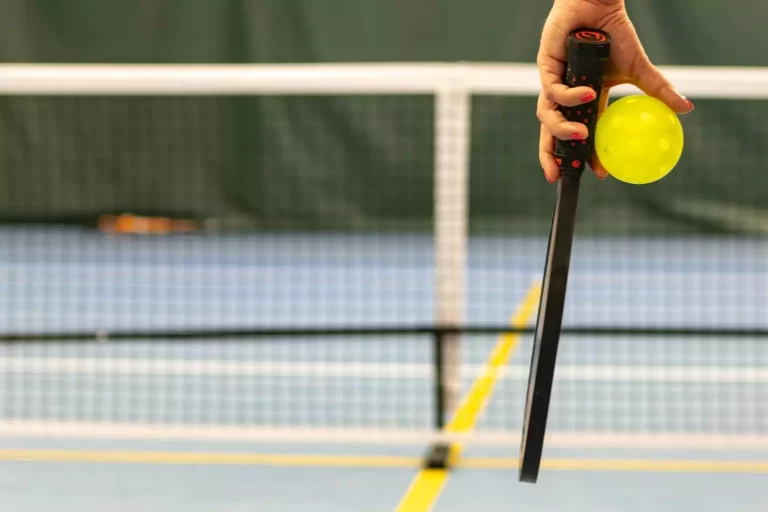You’re in the middle of a heated pickleball match. The energy is high, the serves are fast, and you’re working hard with your partner – but do you ever switch sides?
- It might seem like a simple question, but switching sides in pickleball actually has a big impact on the game’s flow and fairness.
- So, let’s dive into the when, why, and how of switching sides in pickleball!
Ready to learn the strategic side-switching secrets of pickleball? Let’s go!
Do you switch sides in pickleball, and if so, how often?
Yes, you absolutely switch sides in pickleball. Here’s the deal:
- Doubles: The most common way to do it is after each player on a team has served twice. So, you serve twice, your partner serves twice, and then you switch sides and repeat the pattern.
- Singles: You switch sides after each odd-numbered point you score (like at 1 point, 3 points, etc.).
What are the common methods for switching sides during a pickleball match?
There are a few ways teams switch in pickleball:
- The Classic Shuffle: The most used method. After two serves, partners basically swap service courts (the squares to the right and left of the center line).
- Switching After a Set Number of Points: Some tournaments might have you switch after a total number of points, like every 6 or 11 points. This is less common in everyday play.
- Switching After Each Game: In official matches, you’ll always switch after the first game. For a deciding third game, you’ll switch sides again once one side reaches 6 points.
Why is alternating serves important, and how does it impact gameplay?
Alternating serves is important for a few reasons:
- Fairness: It makes sure that one team doesn’t get an advantage by always serving from the same, potentially easier side.
- Strategy: Teams can plan out their serves and positioning knowing they’ll switch after two attempts. This adds a strategic layer to the game.
- Variety: The alternating serves force each player to change up their angles and deal with returns from different sides of the court. This keeps things exciting!

When do players typically switch sides after each game? (Standard timing)
- Yes, you always switch sides after the end of each game. This keeps things fair and ensures that both teams get a chance to play on each side of the court.
How does environmental factors like sun and wind influence the decision to switch sides? (Addresses external factors affecting play)
- This is a huge part of pickleball strategy! If the sun is glaring in one team’s eyes or the wind is pushing shots in one direction, switching sides regularly becomes critical. Sometimes, players agree to switch more often than just at the end of games, perhaps after every few points, to keep things even.
Is there a specific point threshold (e.g., seven or eleven points) for switching sides? (Clarifies potential scoring-based switches)
- Sometimes! In tournaments, a shorter switch might occur mid-game to even out advantages. Switching when one team reaches 6 points in a game played to 11 is common. This prevents one team from having all their serves with any environmental advantage.
Extra Insight: Even in more casual play, keeping an eye on conditions is just good sportsmanship. If you notice your opponent squinting into the sun, suggesting a quick side swap shows both fairness and good pickleball camaraderie!
1. What role does good sportsmanship play in determining when to switch sides? (Touches on fair play)
Good sportsmanship is all about creating a fair and enjoyable experience for everyone. In pickleball, switching sides ensures no team has a prolonged advantage due to things like sun position, wind direction, or court quirks. It’s about giving both teams an equal chance to succeed, regardless of any external factors.
2. Why is communication with your partner and opponents essential regarding side-switching preferences? (Emphasizes teamwork & clarity)
Pickleball can get fast-paced! Clear communication eliminates confusion and keeps everyone on the same page. Before the match, quickly discussing if you’ll switch after each game or at a certain point score ensures everyone knows the game plan. This teamwork also avoids awkward moments and potential collisions when switching.
3. How does switching sides affect the balance of advantages and disadvantages during a match? (Strategic element)
Switching sides is a great equalizer! Here’s how:
- Conditions: If one side is much sunnier or the breeze is a factor, switching means neither team has a long-term disadvantage.
- Terrain: Sometimes courts have uneven spots or weird bounces. Switching helps ensure both teams face the same quirky challenges.
- Mental Game: A dominant team might get complacent. Switching forces everyone to readjust, potentially rebalancing momentum.
How does switching sides contribute to fair play and competitive integrity in pickleball? (Maintains fairness)
Levels the playing field: Conditions like wind, sun glare, and even slight court variations can give one side an unfair advantage. Regular switching ensures that neither player or team has a consistent edge due to external factors.
Neutralizes ‘dominant side’ advantages: Some players are simply better on the forehand or backhand – regular side switches force them to be versatile, preventing someone from dominating a match simply because their favored side stays the same.
What strategies can players employ to maximize the benefits of side-switching? (Turning the rule into an advantage)
Exploit opponent’s weaknesses: Analyze your opponent during a set. Do they struggle with their backhand crosscourt return? Target that side more heavily after the switch.
Force new dynamics: If your opponents are settled into a rhythm, a side switch can disrupt their flow, forcing them to re-evaluate their strategy and shot selection.
Mental refresh: Sometimes, a simple change of scenery can boost focus. Switching sides provides a mini-break within the game, which can help refocus a player’s energy and concentration.
What are the benefits of more frequent side switches in terms of adapting to different conditions? (Could be relevant if the focus is on adapting to the environment)
Adapting to wind and sun: If you’re playing outdoors, regular switching can help both players learn how to adjust their shots to changing wind or deal with the sun moving in and out of their eyes.
Managing uneven surfaces: Even the most well-maintained courts might have slight variations. More frequent switching forces players to be aware of subtle bounces and dead spots and react quickly.
The Basics
- Winning Points Triggers a Switch: In pickleball, you only switch sides when your team scores a point while serving. If you win a point while receiving, you stay put.
- Singles vs. Doubles: The same side-switching rule applies whether you’re playing singles or doubles.
- Switching After Games: After each game finishes, players switch sides of the court. This ensures both teams get to play with potential wind or sun advantages and disadvantages.
FAQs and Insights
- Why don’t you switch halfway through a game? Pickleball uses a scoring system where you can only score points on your serve. This naturally balances the game, making mid-game switches unnecessary.
- Strategic Considerations: Even though you only switch when you score, positioning within your side of the court is flexible. Good pickleball teams will communicate and sometimes shift slightly during a point to optimize their offense or defense.
- What if I’m playing casually? Honestly, for friendly games, side-switching rules can be relaxed. Some people switch after an agreed-upon number of points (say, every 5 points) regardless of who served, or just swap sides after every game. It’s all about having fun!
Switching sides isn’t just about keeping things fair in pickleball; it’s a strategic element of the game.
- By understanding the rules of when to switch and using it to your advantage, you can gain an edge and take your pickleball game to the next level.
- Remember, timing is everything when it comes to side-switching. With practice, you’ll master it in no time!
Feel like a pickleball pro? Test your knowledge and see if you can predict when to switch sides in your next match!
